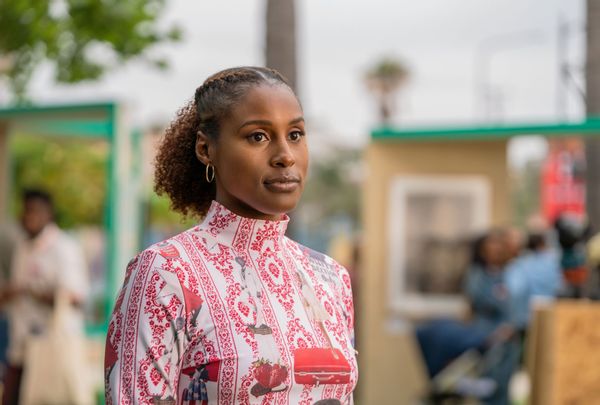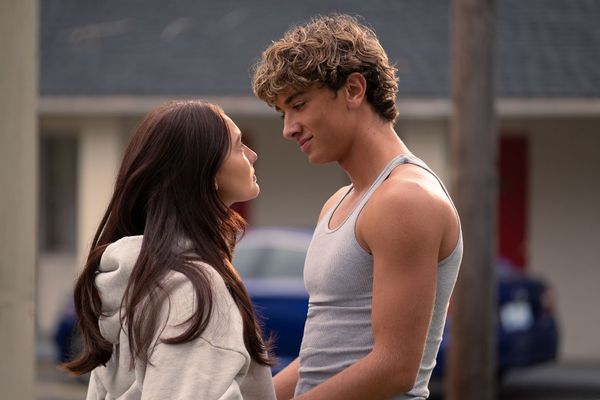
Around 2014, years before Apple and Amazon gave it any competition, Netflix co-founder Reed Hastings predicted that broadcast TV would be dead by 2030. "It's kind of like the horse, you know," he said to The Hollywood Reporter. "The horse was good until we had the car."
An attention-grabbing quote, but it's merely punching up an ancient opinion because the deathwatch for "conventional TV," i.e. cable and broadcast, has been going on for decades. In the early aughts, the fearmongering began when pay TV rapidly expanded. A few of the more established destinations – your TNTs and your USAs – began drawing larger audiences than programming on smaller channels like UPN and The WB.
Pessimistic diagnosticians tut-tutted at the impending demise of everything from sitcoms, a genre that survived several near-death experiences after "Friends" left the air to veteran institutions like PBS, which some proposed was redundant given cable's array of options.
Both are still very much alive, along with linear TV itself. UPN and The WB merged to become The CW which, against the odds, lives on as well.
This is why these claims are nearly always countered by some bastardization of that quote about its death being greatly exaggerated. Keep that in mind when taking the pulse of broadcast and cable in its current state, which is far from hale and hearty.
According to Nielsen, in July, fewer than 50% of viewers in the United States watched broadcast or cable TV – a historic first. In that same month, around 38.7% of total U.S. TV usage happened via streaming services, with YouTube (not including YouTube TV) and Netflix being the most popular.
This comes at the end of a season when Nielsen's measurements indicate that no broadcast drama or comedy averaged more than 10 million viewers in its season-to-date average. Not even CBS juggernauts like "NCIS" or "Young Sheldon" surpassed that bar.
Instead, the most popular scripted series on broadcast or cable season-to-date – again, measured by Nielsen – is Paramount Network's "Yellowstone," which averaged 11.5 million viewers.
Something else happened in July, as you may have read: "Suits," which has been dead since 2019, became the most streamed show on Netflix after debuting on the streaming in June, and has also done brisk business over on NBCU's Peacock. It firmly sits in Netflix's Top 10 TV shows as of this writing.
This news gave rise to a flurry of explanations as to why everyone is suddenly losing their minds over a "blue skies"-era USA drama that ended four years ago. Aside from the obvious Meghan Markle associations, we should say.
A caveat to all this is that streaming services don't release precise viewership numbers, leaving Nielsen to sort through minutes streamed to obtain their rankings. Nevertheless, these developments tell us something about a consumer model that both embraces TV as we've long known it while appealing to an audience that's increasingly turning to YouTube and TikTok.

Don't forget that two years ago The CW's "All American" topped Netflix's rankings of most viewed shows for several weeks running. Many CW shows drew healthy audiences on Netflix while WarnerMedia (which became WBD) and CBS had an agreement with the service. (That deal expired in 2019.)
Of course, their popularity is eclipsed by Netflix's successful runs with "The Office" and "Friends" whose episodes were reclaimed to stream on Peacock and Max, respectively.
CW series' success on Netflix may be more noteworthy because of how Netflix responded, ramping up productions appealing to younger audiences. ("Chilling Adventures of Sabrina" was a Netflix original initially conceived as a CW show. Although it only lasted two seasons it softened the soil for "Wednesday" to flourish.)
The CW has since changed ownership and largely gotten out of the tween drama game, making Netflix the primary destination for young adult shows – challenged, perhaps, by Prime Video, which scored a hit in "The Summer I Turned Pretty," which was released weekly. Sure, most people don't ride horses anymore, but what is an engine's output measured in? Ah yes – horsepower.

There are two apparent commonalities between these very different shows. One is that they have far more episodes than most Netflix originals. Netflix's longest-running original, "Grace and Frankie," has 94 episodes versus the 134 in "Suits" run, or the hundreds of hours of "NCIS" and "Grey's."
Out of the three repurposed linear TV shows "Suits" is the lightest option, but all of them operate with the sweet spot between intense and brainless, making them perfect background noise or easy binges for lazy hot days spent indoors.
The main takeaway for streamers likely is that reviving dead network shows is cheaper than making more homegrown procedurals with more expansive seasons, which would necessitate larger writing staffs working at a faster pace. They'd have to replicate some version of classic network and cable TV productions, functionally and structurally.
They're already doing that in some respects. Netflix's most popular original title in the first week of August was "The Lincoln Lawyer," a movie adaptation with procedural beats that came in second to "Suits." And every streaming service is forgoing automatically serving every show as a binge in favor of rolling out episodes at a weekly clip or streaming some events live – you know, like broadcast and cable. Amazon is finding success in that arena with football, while Netflix's live-streaming attempts have garnered mixed results.
All of which is to say, broadcast and cable TV aren't quite dead — and it's unlikely broadcast will ever be since by its very definition, it is free and available to anyone with a TV and an antenna. Granted, the fall season sure makes it look like the Grim Reaper is circling, with most broadcast network airing game shows, repeats and imported series to contend with ongoing strikes by the Writers Guild of America and SAG-AFTRA, now creeping into their fifth month. (Salon's unionized employees are represented by the WGA East.)
Hollywood's labor stoppage will eventually resolve, but only when the studios accept that they and the industry at large must evolve. That requires finding a way to ensure conventional TV continues to be viable in a way that supports those who make its shows and the companies producing them. The feel-good TV hit of the summer proves linear TV's continued existence also benefits Netflix and other digital platforms. Streaming is the future; there's no getting around that. But those services would be foolish to completely starve out those stalwart workhorses of linear TV while viewers still bet on them.







